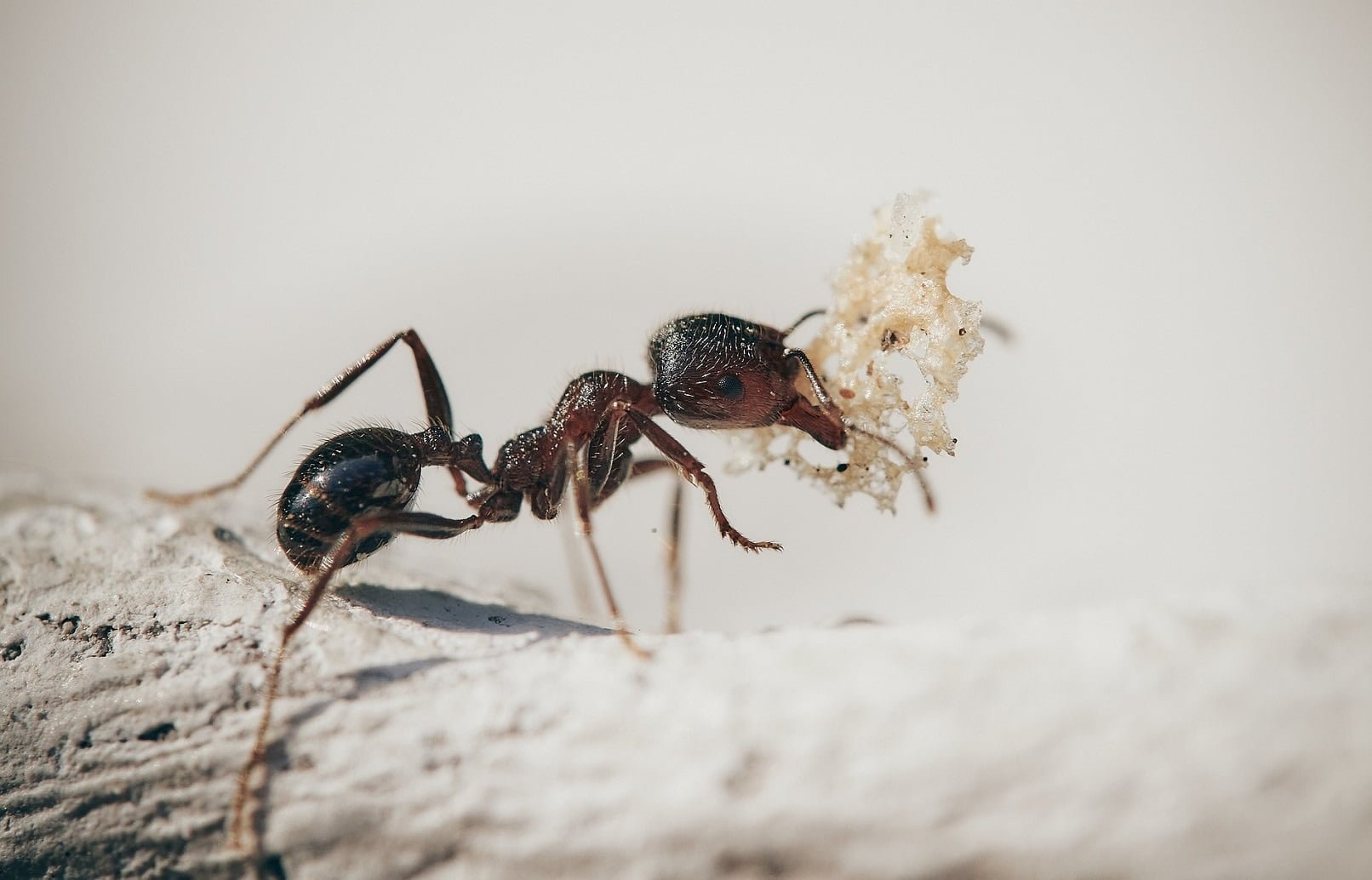Do you love observing tiny creatures, such as ants, in their natural habitat? If so, caring for ants in test tubes can be a fascinating experience, but it’s also important to make sure they don’t escape while being fed or taken care of.
Ants are fascinating creatures that have captured the attention and curiosity of many people.
Their ability to work together in colonies and solve complex problems has made them a subject of scientific study and admiration.
If you are someone who enjoys observing ants, you may have tried feeding them in a test tube.
While this can be a great way to watch them up close, it can also be challenging to prevent their escape.
In this article, you’ll discover proven tips for successfully caring for ants in test tubes, including feeding them properly, regulating temperature in their environment, and safely transitioning them to a proper formicarium.
So if you want to learn the secrets of ant keeping and ensure that your ants are happy and healthy, read on!
Why use a test tube to feed ants?
Using a test tube to feed ants is a popular and effective method because it mimics their natural environment.
Ants live in nests or colonies, which are connected by tunnels and chambers.
The test tube serves as a small, temporary nest, where the ants can live and feed without being disturbed.
The test tube also provides a secure and stable environment for the ants, as it is difficult for them to escape.
Feeding Ants in a Test Tube
Feeding ants in a test tube can be a challenging task. Here is a step-by-step guide to ensure your little friends are safe and happy:
Step 1: Prepare the Test Tube
The first step is to prepare the test tube properly.
Clean the test tube thoroughly to remove any residue or chemicals that may be harmful to the ants using hot water and soap.
Rinse it well with water and allow it to dry completely before using it as a part of the ant test tube setup.
Step 2: Plug the Test Tube
Next, plug the test tube with cotton wool or a small piece of cotton.
This will prevent the ants from escaping and also allow for air circulation.
Make sure the cotton is not too tightly packed, as the ants will need to be able to move around and access the food.
Step 3: Choose the Right Food
Ants require a varied diet, consisting of carbohydrates, proteins, and fats.
Offer them a small amount of honey or sugar water for carbohydrates, small insects like fruit flies or mealworms for protein, and a tiny amount of oil or peanut butter for fat.
Be sure to offer fresh food, as ants will not eat stale or moldy food.
Step 4: Use a Feeding Tray or Standardized Outworlds
To avoid putting food directly on the glass of the tube and encourage bacterial growth and increase the risk of ants getting stuck in the liquid, use a feeding tray, which can be made using aluminum foil or wax paper or by purchasing one such as the ants genesis test tube feeder.
Another option is to use standardized outworlds that work with test tubes in formicariums, isolating the living environment from the feeding area.
Step 5: Offer Food on a Toothpick
Another option is to offer the food directly on a toothpick or a small piece of wire.
Insert the toothpick or wire into the cotton or sponge covering the open end of the test tube.
This will allow the ants to access the food without escaping.
Step 6: Keep the Test Tube Clean
Ants are more likely to escape from a dirty test tube, so it is essential to keep the test tube clean.
Remove any uneaten food promptly and clean the test tube with a mild soap solution.
Rinse the test tube thoroughly and allow it to dry before replacing the cotton or sponge.
Preventing Ant Escape
Here are some tips for preventing ant escape when caring for ants in test tubes:
Tip 1: Use a Double-Layered Test Tube
Using a double-layered test tube can prevent ant escape. Place the test tube inside another test tube or a larger container, creating a barrier the ants cannot cross.
This can be particularly useful if you have an ant species that is known for being particularly skilled at escaping.
Tip 2: Create a Moat or a Barrier Around the Test Tube
Create a barrier around the test tube by using a small plastic container or a piece of tape to create a moat-like barrier around the test tube.
This will prevent the ants from crossing the barrier and escaping.
Ensure that you leave enough space between the barrier and the test tube to allow for air circulation.
Tip 3: Apply Baby Powder or Talcum Powder
Ants have difficulty crawling on smooth surfaces, so applying baby powder or talcum powder to the surface around the test tube can make it difficult for them to escape.
Simply sprinkle a small amount of powder around the test tube, making sure not to get any on the cotton wool plug or the food.
Tip 4: Keep a Close Eye on the Test Tube
The best way to prevent ant escape is to keep a close eye on the test tube.
Check on the ants regularly to ensure they are healthy and happy.
If you notice any signs of stress or escape attempts, take action immediately to prevent them from getting out.
Regulating Temperature in Test Tubes
Regulating temperature is essential when caring for ants in test tubes.
Ants are cold-blooded creatures and rely on their environment to maintain their body temperature.
Test tubes can function like greenhouses, becoming much warmer inside than the surrounding air.
To keep your ants warm, turn off the air conditioning in the room they are in or use heat lamps or heating cables.
However, be cautious not to overheat the test tube as it can also be harmful to your ants.
To avoid flooding, it is recommended to keep the test tubes at a slight incline so that the ants have high ground if a flood occurs.
Flooding can occur if water spills in the test tube or if the humidity in the environment is too high, causing condensation to build up inside the test tube.
Moving Ants to a Proper Formicarium
Test tubes are a temporary housing solution for ants, and at some point, you will need to move your colony into a proper formicarium.
Ideally, you should allow the colony to move into the nest by themselves, as this is less stressful for the ants.
As the colony grows, ants will naturally move out of the test tube and into the outworld or formicarium.
If you need to move your ants manually, ensure that the ants are cool and put them in a refrigerator for about 30 minutes prior to this process.
This will make the ants calmer and less likely to escape.
Carefully tap the ants into their new home and keep a paintbrush and a pair of featherweight forceps handy to manipulate the ants if necessary.
Different types of ants have different needs and preferences when it comes to housing.
Before choosing a formicarium, do some research on the type of ants you have and their natural habitat.
Ensure that the formicarium provides the right conditions, such as temperature, humidity, and nesting space, to meet the needs of your ants.
Ants in Test Tubes: Common Questions and Answers
In this section, we’ll answer some of the most common questions about caring for ants in a test tube:
Q: How do you feed ants in a test tube?
To feed ants in a test tube, you can either use a feeding tray made from aluminum foil or wax paper, or purchase a specialized test tube feeder like the ants genesis test tube feeder. Another option is to use standardized outworlds that work with test tubes in formicariums, which isolate the living environment from the feeding area.
Q: What do you feed ants in a test tube?
Ants can be fed a variety of foods in a test tube, such as sugar water, honey, small insects, fruits, and vegetables.
Q: How often should you feed ants in a test tube?
The frequency of feeding ants in a test tube depends on the species and the number of ants. As a general rule, ants should be fed every few days, but some species may require daily feedings.
Q: Can you overfeed ants in test tubes?
Yes, overfeeding ants in a test tube can lead to mold growth, which can be harmful to the ants. It’s best to provide small amounts of food at a time and remove any uneaten food after a few hours.
Q: How do you prevent mold growth when feeding ants in a test tube?
To prevent mold growth when feeding ants in a test tube, it’s important to provide small amounts of food and remove any uneaten food after a few hours. You can also place the test tube in a cool and dry area to reduce humidity.
Q: Do you need to provide water for ants in a test tube?
Yes, ants need water to survive. You can provide water for ants in a test tube by placing a damp cotton ball or a small water source, such as a test tube filled with water, in the tube.
Q: How long can ants survive without food in a test tube?
The length of time that ants can survive without food in a test tube depends on the species and the number of ants. Some ants can survive for weeks or even months without food, but it’s important to provide regular feedings to keep them healthy.
Q: Can you use honey to feed ants in a test tube?
Yes, honey can be used to feed ants in a test tube. However, it’s important to dilute the honey with water to make a 10-20% solution before feeding it to the ants.
Q: Is it necessary to remove uneaten food from a test tube?
Yes, it’s important to remove uneaten food from a test tube after a few hours to prevent mold growth and other issues.
Q: What are the benefits of feeding ants in a test tube instead of a regular ant farm?
Feeding ants in a test tube allows for better observation of their behavior and growth, as well as easier maintenance and cleaning. It also reduces the risk of ants escaping and potentially harming the environment.
Q: Why is it important to create a moat or barrier around the test tube?
Creating a moat or barrier around the test tube is important to prevent ants from escaping and potentially causing harm to the environment.
Q: What materials can be used to create a moat or barrier around the test tube?
A small plastic container or a piece of tape can be used to create a moat-like barrier around the test tube.
Q: How do you create a moat or barrier around the test tube?
To create a moat or barrier around the test tube, you can place the test tube inside a small plastic container or apply a piece of tape around the test tube, leaving enough space between the barrier and the test tube for air circulation.
Q: Can the moat or barrier around the test tube be removed after some time?
Yes, the moat or barrier around the test tube can be removed after some time, once the ants have established themselves and are less likely to escape.
Q: How much space should be left between the moat or barrier and the test tube?
There should be enough space between the moat or barrier and the test tube to allow for air circulation. A gap of 1-2 millimeters is generally sufficient.
Q: Can the moat or barrier be used in conjunction with other methods of ant containment?
Yes, the moat or barrier can be used in conjunction with other methods of ant containment, such as placing the test tube in a larger container or using a lid with small air holes.
Q: When to move ants out of test tube?
Ants should be moved out of a test tube and into a more suitable habitat once the colony has outgrown the test tube or the food and water sources inside the test tube have become depleted. Signs that the colony has outgrown the test tube include overcrowding, a buildup of waste or dead ants, or the presence of larvae and pupae. It is important to ensure that the new habitat is appropriate for the species of ants you are keeping and has suitable conditions such as temperature, humidity, and ventilation.
Q: What is a good ant test tube connector?
A good connector should provide a secure and airtight seal between the test tube and the outworld or other habitat. Silicone tubing is a popular choice for ant keepers as it is flexible, easy to use, and provides a good seal. Another option is vinyl tubing, which is also flexible and easy to use, but may not provide as tight of a seal as silicone. It is important to choose a connector that is the appropriate size for the test tube and the outworld, and to ensure that it is properly cleaned and disinfected before use.
Q: How to raise a queen ant without test tube?
Raising a queen ant without a test tube can be challenging, as test tubes provide a safe and secure environment for the queen and her brood. However, it is possible to raise a queen ant without a test tube by providing an alternative nesting site with appropriate conditions, such as temperature, humidity, food, and water. This can be a small container with a moistened cotton ball or soil/sand. However, it is generally recommended to use a test tube or other appropriate housing for raising queen ants, as it provides the safest and most suitable environment for the queen and her brood.
Q: What is a recommended queen ant test tube?
The clear plastic test tube with a screw-on cap is the most recommended type of test tube for a queen ant setup. It provides a secure and easy-to-observe environment for the ants.
We hope this has answered your questions and provided you with the information you need to successfully care for your ants in test tubes.
Final Word
Ants are truly amazing creatures, and caring for them in a test tube can be a fascinating way to observe their behavior up close.
With the tips and strategies we’ve shared in this article, you’ll be able to create a comfortable and safe environment for your ants, ensuring that they are well-fed and regulated while also preventing them from escaping.
By following these proven techniques, you’ll be able to keep your ants healthy and happy, and enjoy the wonders of ant keeping for years to come.
So go ahead and give it a try – you might be surprised at just how rewarding and enjoyable caring for ants in test tubes can be!
Also Read: Choosing the Right Fish Food: A Guide to Keeping Your Fish Healthy and Happy
Well, what do you think about the article?
Did you enjoy reading “Ant Keeping Secrets: Proven Tips for Caring for Ants in Test Tubes“? If so, please comment down below.
Your thoughts and opinions are valuable to us, so please feel free to leave a comment below to let us know if the information provided was helpful.
To see more content like this check the others section of Money For My Beer.

Chief Editor and Website Owner.
Hey, I’m Ryan, a software guy and the owner of Money For My Beer. I’m the one making sure all our posts on the site are awesome.
I usually handle tech stuff that might not be super interesting to everyone, like programming enterprise software, apps, games, and websites. Cool stuff, right? I also help clients with SEO and sometimes create games.

